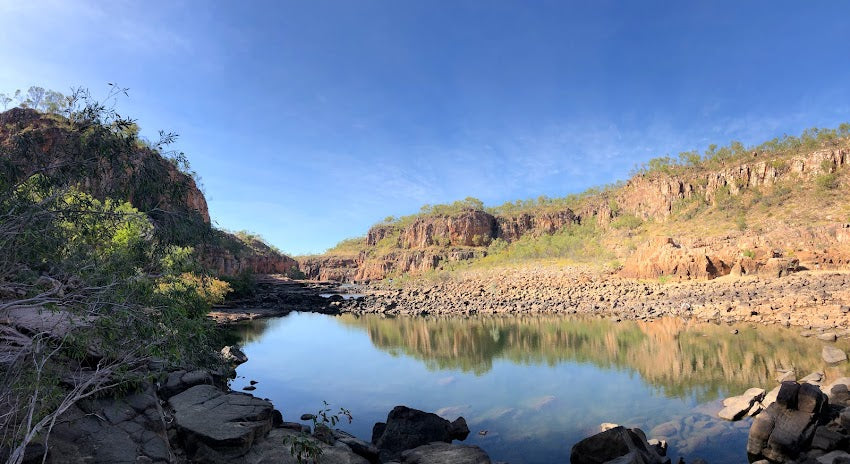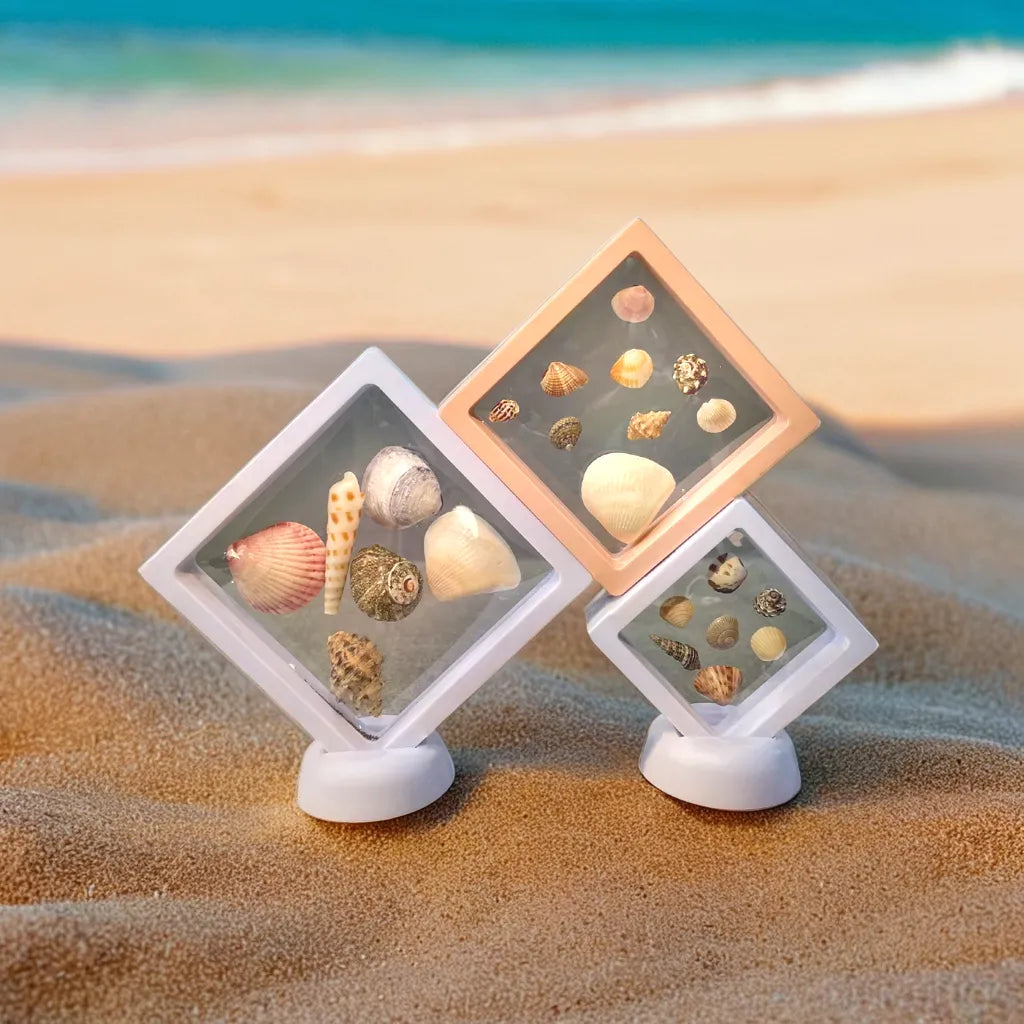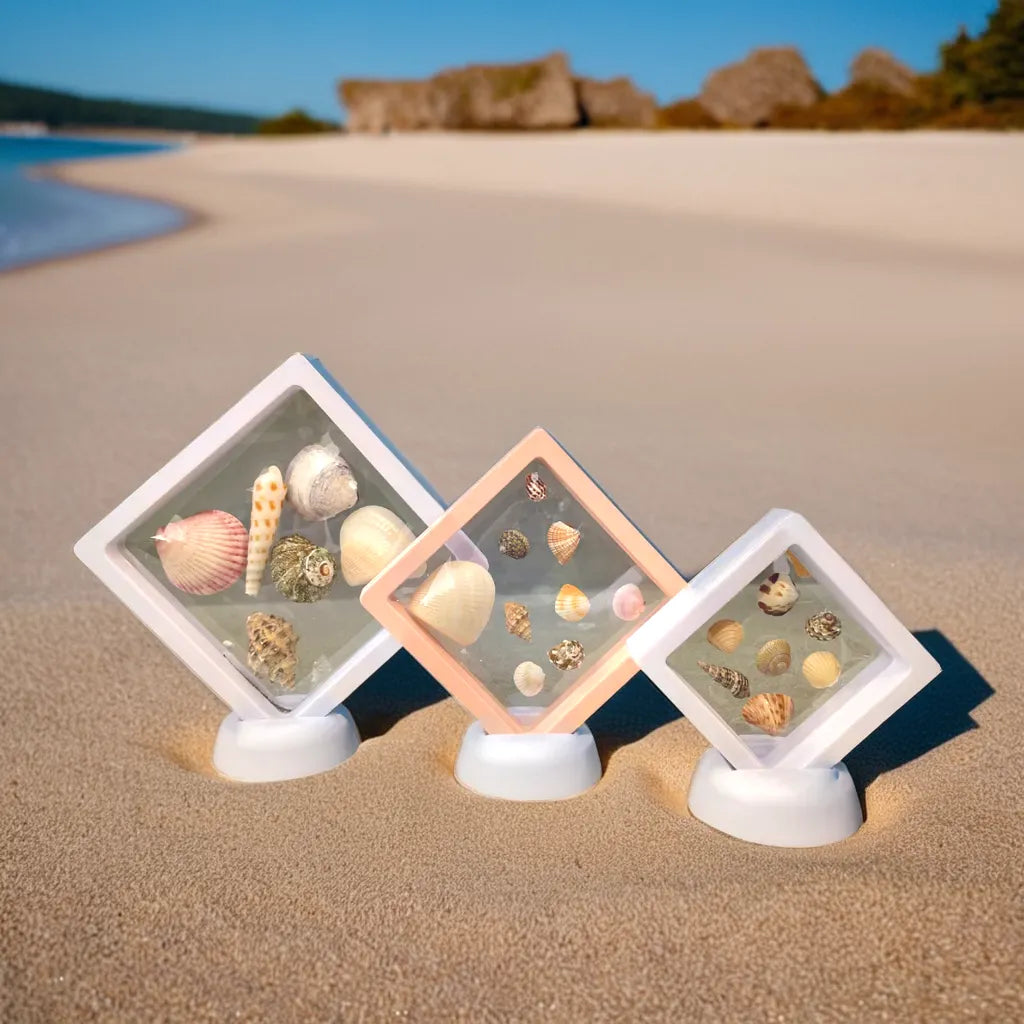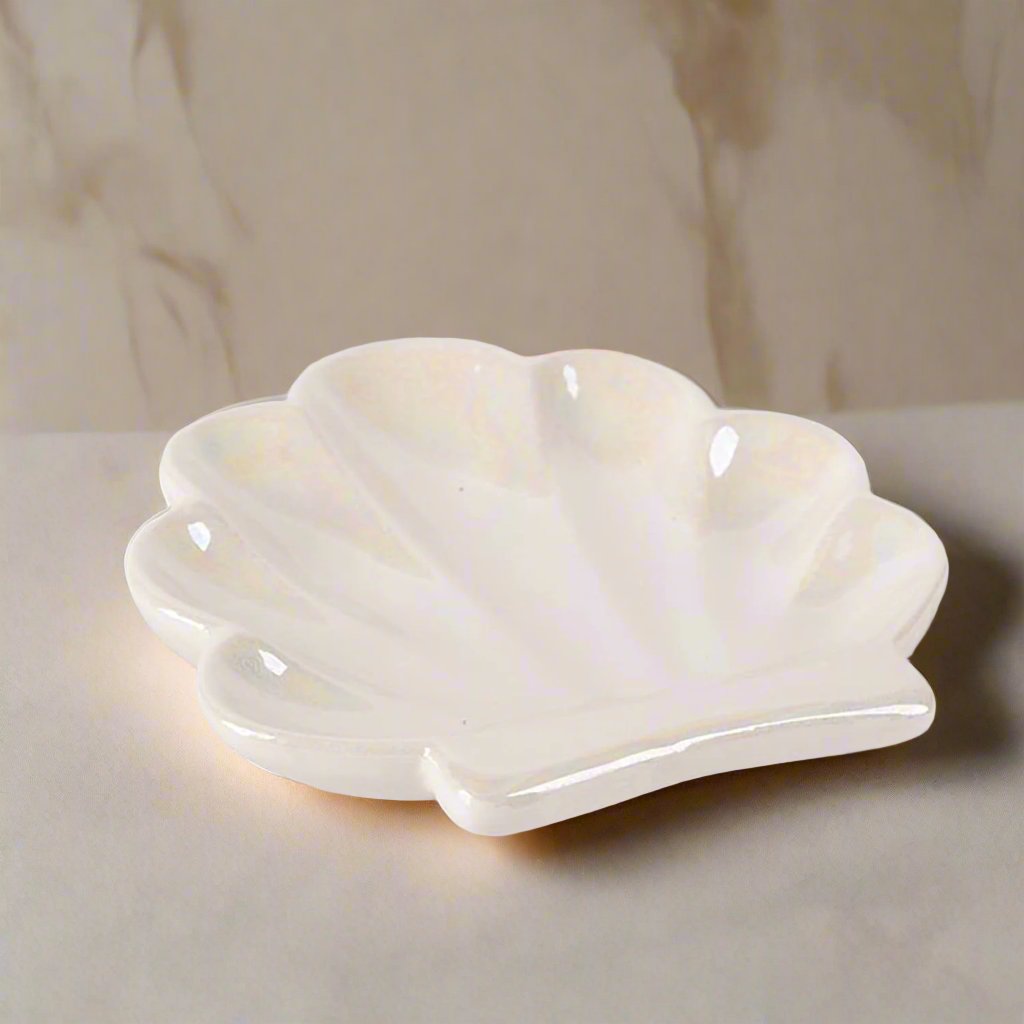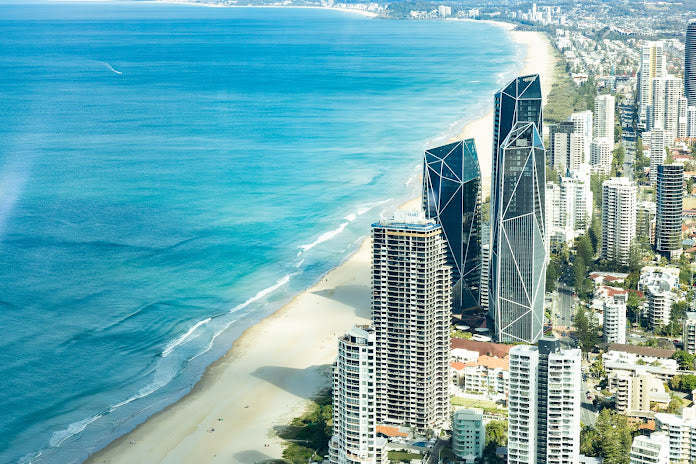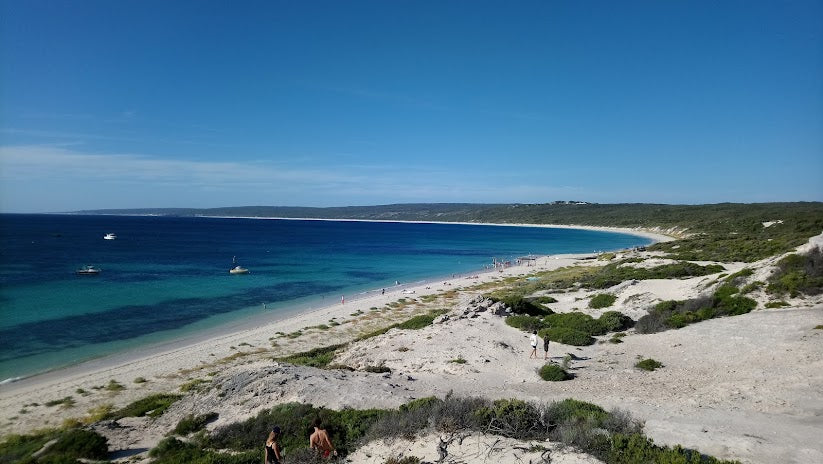
The Northern Territory's coastline boasts some of Australia's best shelling beaches. From the Gulf of Carpentaria to the Timor Sea, shell collectors can find a diverse range of treasures.
The top shelling spots in the Northern Territory for 2024 include Gadalathami (Town Beach) in Nhulunbuy and Casuarina Beach near Darwin.
These beaches offer more than just shells. Visitors can enjoy stunning views, crystal-clear waters, and unique wildlife. Gadalathami, for example, stretches for three kilometres and looks out over the turquoise Gulf of Carpentaria. It's the only patrolled beach in Arnhem Land, making it a safe spot for families.
Shell collecting in the Northern Territory is a great way to connect with nature and learn about marine life. It's important to follow local rules and respect the environment. Many beaches have guidelines to ensure the protection of shells and sea creatures.
Key Takeaways
- The Northern Territory has diverse shelling beaches along its coastline
- Top spots include Gadalathami in Nhulunbuy and Casuarina Beach near Darwin
- Responsible shelling practices help protect the marine environment
Historical Significance of Shelling in the Northern Territory
Shelling has played an important role in the Northern Territory's history for thousands of years. Aboriginal peoples have long collected shells along the coast for various purposes.
Shell middens are common archaeological sites found throughout the Northern Territory. These ancient rubbish heaps contain discarded shells and provide valuable insights into past Indigenous lifestyles and diets.
Shells were highly prized by Aboriginal groups for trading. Large pearl shells from species like Pinctada maxima were especially valued and widely exchanged across Australia before European settlement.
Some shells had spiritual significance in Aboriginal cultures. They featured in ceremonies, artwork, and stories passed down through generations.
In more recent history, the pearling industry became economically important in northern Australia. Divers searched for pearl shells, which were used to make buttons and other products.
Save 50%


Today, recreational shelling is a popular activity for tourists and locals alike. However, there are now rules to protect marine ecosystems and cultural sites.
Shells continue to hold cultural importance for many Aboriginal people in the Northern Territory. They're used in traditional crafts and help maintain connections to sea country and ancestors.
Top Shelling Beaches in the Northern Territory
The Northern Territory boasts several beaches perfect for shell collecting. These spots offer a diverse range of shells and scenic coastal views for beachcombers to enjoy.
Casuarina Beach
Casuarina Beach is a top spot for shell hunters in Darwin. The beach stretches for 8 km, giving plenty of room to search. After storms, the beach often reveals many shells.
Visitors can find cowries, cone shells, and bivalves here. The best time to look is at low tide in the early morning. Bring a bucket and wear sturdy shoes to protect your feet.
The nearby Casuarina Coastal Reserve has picnic areas and walking trails. This makes it easy to spend a full day exploring and shelling.
Vestey's Beach
Vestey's Beach in Darwin offers good shelling chances in a calm setting. It's less crowded than some other beaches, which means more shells for collectors.
Common finds include scallops, oyster shells, and sand dollars. The beach has rocky areas that trap shells during high tide. These spots are worth checking when the water goes out.
There are shady spots near the beach for resting between shell hunts. Visitors should watch out for box jellyfish from October to May.
Dundee Beach
Dundee Beach, about 130 km southwest of Darwin, is known for its varied shells. The beach's remote location means fewer people and more untouched shells.
Save 20%


Collectors can find nautilus shells, giant clams, and many types of snail shells. The long shoreline gives lots of space to search. 4WD vehicles can access more isolated areas.
Fishing is also popular here, so shell hunters can mix activities. There are no lifeguards, so swimmers should be careful.
Lee Point Beach
Lee Point Beach north of Darwin is great for shells and bird watching. The beach has a mix of sand and rocky areas, creating different shell habitats.
Beachcombers often find olive shells, augers, and moon snail shells. The best shelling is often after the wet season when storms wash up new treasures.
The nearby Lee Point Village Resort offers places to stay for longer shell hunting trips. Remember to check tide times to plan the best shelling times.
Gunn Point Beach
Gunn Point Beach is a bit harder to reach but rewards shell seekers with unique finds. It's about 40 km northeast of Darwin and needs a 4WD to access.
The beach is known for its large shells, including conch and helmet shells. Tidal flats exposed at low tide are great spots to search. Bring water and sun protection as there are few facilities.
Camping is allowed, letting visitors shell over several days. Always check road conditions before heading out, as access can be tricky in the wet season.
Timing Your Visit for Optimal Shelling
Picking the right time for your shelling adventure can make a big difference. Tides, seasons, and weather all play a role in finding the best shells.
Tidal Patterns
Low tide is the best time for shelling. It exposes more of the beach and reveals shells hidden underwater. Check local tide charts to plan your visit. The hour before and after low tide offers prime shelling opportunities.
Save 42%


Incoming tides can also bring in fresh shells. Early morning low tides are great for beating the crowds. Night tides can uncover unique finds, but take care and bring a torch.
Spring tides, which happen during full and new moons, create very low tides. These are top times for serious shellers.
Seasonal Variations
Winter months often bring the best shelling in Northern Territory. From May to August, cooler weather and calmer seas wash up more shells.
Summer cyclones can churn up the ocean floor. This sometimes leads to rare shell finds after the storm passes. But be safe and wait for official all-clear notices.
Spring and autumn offer mild weather for comfortable beachcombing. These seasons can yield a mix of shells from different ocean currents.
Weather Considerations
Windy days can be great for shelling. Strong onshore winds push more shells onto the beach. Look for days with winds blowing from the sea to land.
After storms, beaches often have fresh shell deposits. Wait until it's safe, then check for new treasures. Rainy days can mean fewer people on the beach, giving you more chances to find good shells.
Sunny, calm days are pleasant for shelling but may not yield as many finds. They're still good for spotting shells in shallow water.
Shelling Etiquette and Conservation Practices
Responsible shelling is key to protecting Northern Territory's beaches and marine life. When collecting shells, it's vital to follow some simple rules.
Only take empty shells. Leave shells with living creatures inside alone. This helps keep beach ecosystems healthy.
Limit your collection. Take just a few special shells as keepsakes. Leaving plenty behind lets others enjoy them too.
Be gentle on the beach. Avoid trampling plants or disturbing animals. Stay on marked paths where possible.
Don't remove sand or coral. These are important parts of the beach environment.
Clean up after yourself. Take all rubbish with you when you leave. This keeps beaches clean for wildlife and other visitors.
Learn about protected species. Some shells are rare or endangered. It's illegal to collect these, so know what to avoid.
Consider taking photos instead of shells. This lets you remember your finds without impacting the environment.
By following these practices, we can all enjoy shelling while looking after Northern Territory's beautiful beaches for the future.
Safety Tips for Shelling Expeditions
Staying safe while shelling in the Northern Territory requires wildlife awareness and proper gear. Taking precautions can help make your beach adventure enjoyable and worry-free.
Wildlife Awareness
The Northern Territory's beaches are home to many creatures. Be on the lookout for box jellyfish from October to May. Wear a stinger suit for protection. Watch where you step to avoid stonefish and other hidden marine life.
Crocodiles can be found in coastal areas. Check for warning signs and only swim in designated safe zones. Stay at least 5 metres from the water's edge when shelling.
Save 20%

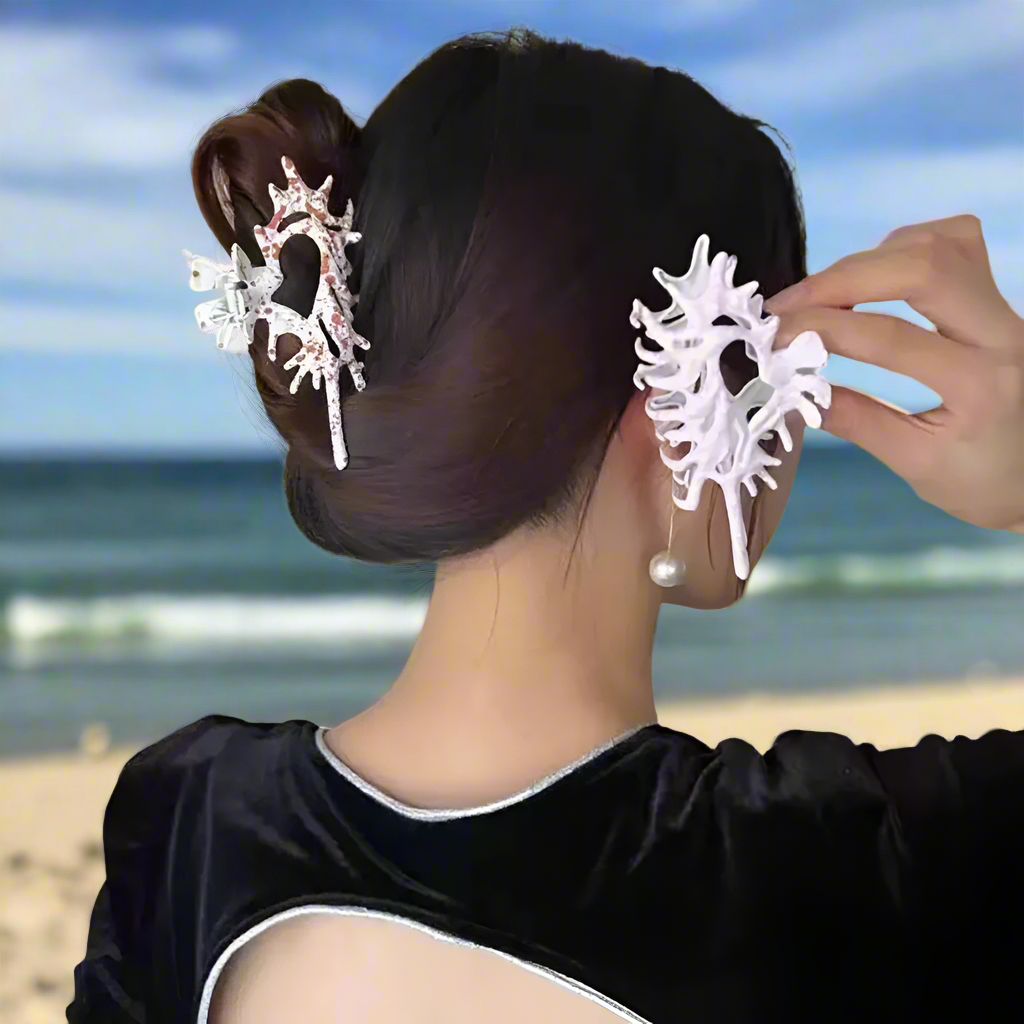
Snakes may hide in dunes or rocky areas. Wear closed shoes and use a stick to poke through debris. If you spot a snake, back away slowly.
Personal Safety Gear
Pack these items for a safe shelling trip:
- Wide-brimmed hat
- Sunglasses
- Sunscreen (SPF 30+)
- Insect repellent
- Sturdy shoes with good grip
- Plenty of water
- First aid kit
Wear light, loose clothing to stay cool. Bring a mobile phone in a waterproof case. Let someone know your plans before heading out.
Use gloves when handling shells to avoid cuts. Some shells may have living creatures inside, so check before picking them up.
Transportation and Accessibility
Getting to Northern Territory's top shelling beaches can be an adventure. Most beaches are remote, so a 4WD vehicle is often needed. Hire one in Darwin or other major towns if you don't have your own.
Public transport is limited outside urban areas. Tour operators offer trips to popular beaches, which can be a good option for visitors without a car.
Some beaches have wheelchair access, but many are quite rugged. Mindil Beach in Darwin has the best accessibility. It hosts markets with wheelchair-friendly paths from May to October.
For more distant beaches, small planes or boats may be required. Local guides can help arrange transport to isolated spots in Arnhem Land or on islands.
Remember to check road conditions before setting out. Unsealed roads can become impassable after rain. Always carry extra fuel, water and supplies when travelling to remote areas.
Parking is usually free at NT beaches, but facilities are often basic. Pack everything you need for your trip, including food, drinks and sun protection.
Accommodation Options Near Prime Shelling Spots
Save 20%
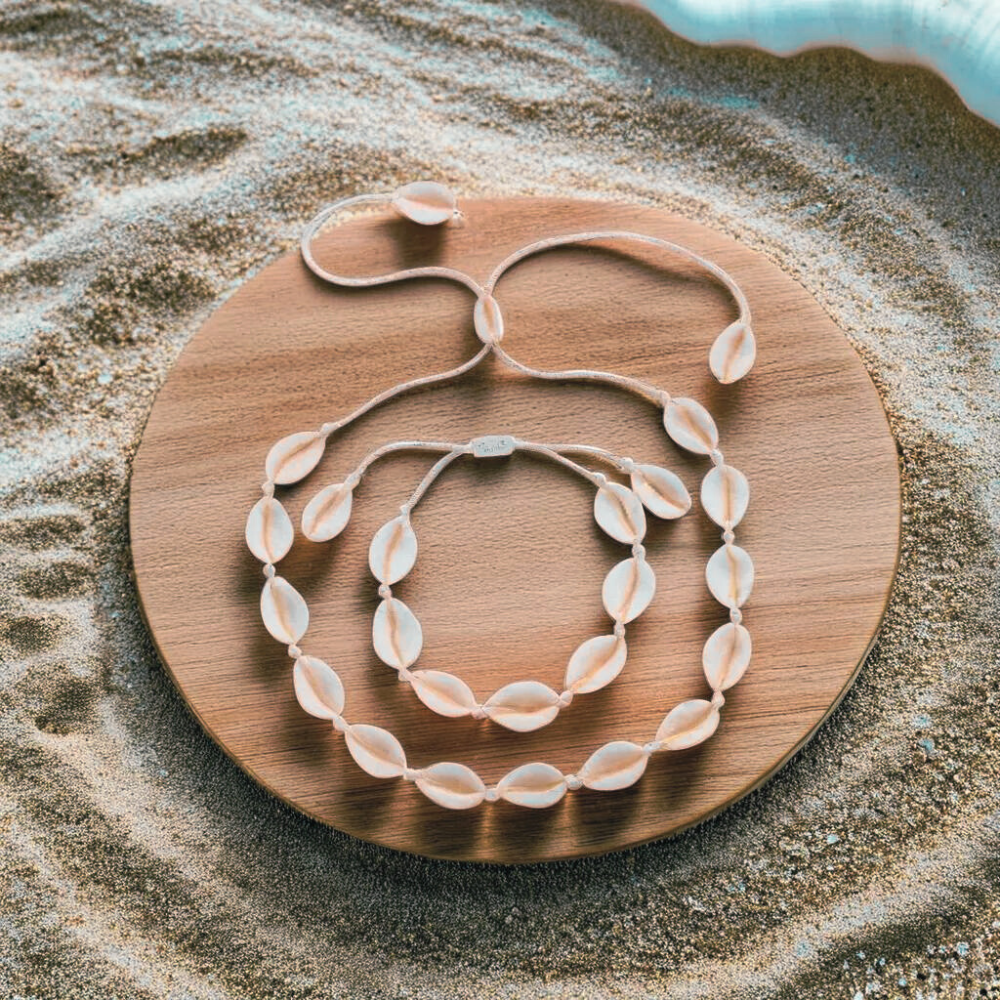
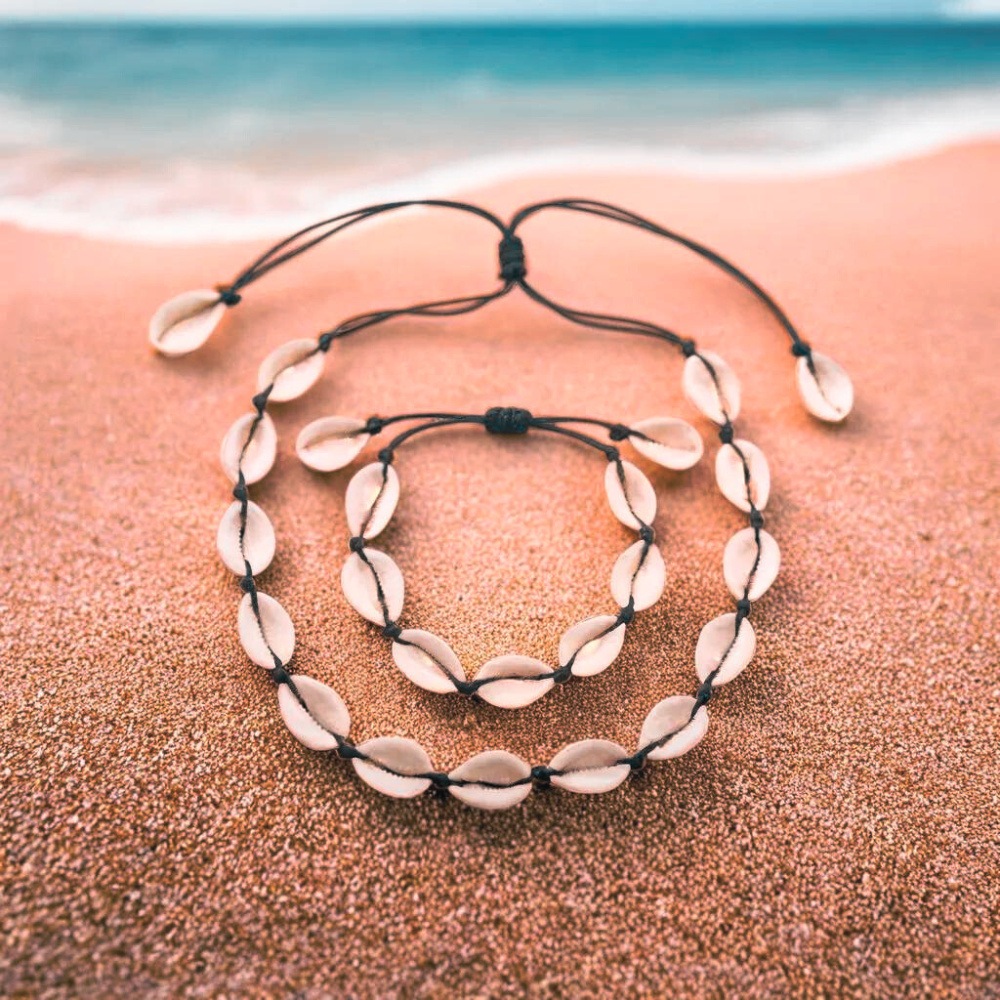
The Northern Territory offers a range of lodging choices close to top shelling beaches. Visitors can find options to suit different budgets and preferences.
Beachfront holiday parks provide affordable stays with easy beach access. Many have powered sites for caravans and camping spots for tents. Some parks also offer cabins for those who prefer more comfort.
For a bit more luxury, beachside resorts and hotels are available in popular coastal areas. These often feature amenities like pools, restaurants, and organised activities.
Holiday rentals are another popular choice. Beach houses and apartments let guests enjoy a home-away-from-home feel. Many have full kitchens and laundry facilities.
Some accommodation options cater specifically to fishing enthusiasts. These may offer services like boat ramps, fish cleaning stations, and tackle shops on-site.
It's wise to book early, especially for peak seasons. School holidays and the dry season (May to October) tend to be busiest.
When choosing a place to stay, consider:
- Distance to shelling spots
- Amenities offered
- Reviews from past guests
- Price range
Booking directly with the property can sometimes get you the best rates. Comparison websites are also useful for finding deals.
Guided Shelling Tours and Educational Excursions
Guided shelling tours offer a great way to explore Northern Territory's beaches and learn about local shells. Expert guides lead these trips, sharing their knowledge of different shell types and where to find them.
Many tours combine shelling with wildlife watching. Visitors might spot sea turtles, dolphins, or native birds while searching for shells. This gives a fuller picture of the coastal ecosystem.
Some tour operators provide tools like sifters and buckets to help with shell collecting. They also teach proper techniques to avoid damaging live shells or disturbing habitats.
Educational excursions often include talks on shell identification and conservation. Participants learn about the life cycles of molluscs and the importance of maintaining beach environments.
Family-friendly options are available, with activities geared towards kids. These might involve shell-themed games or crafts using found materials.
For keen shell collectors, specialised tours focus on finding rare or unusual specimens. These trips may visit remote beaches only accessible by boat.
Booking a guided tour can be a good choice for visitors new to shelling. It takes the guesswork out of where to go and what to look for.
Best Practices for Identifying Shells
Identifying shells on Northern Territory beaches can be an exciting adventure. To get started, bring a small magnifying glass and a field guide specific to Australian shells.
Look closely at the shell's shape, size, and colour. Note any unique patterns or textures on the surface. These details can help narrow down the species.
Pay attention to the shell's aperture - the opening where the animal once lived. Its shape and size can be key identifiers.
Check for any spines, ridges, or bumps on the shell. These features are often distinctive to certain species.
Take clear photos from multiple angles if you're unsure about a shell's identity. This can help with later research or asking experts for help.
Be mindful of local rules about shell collecting. Some areas may have restrictions to protect the environment.
Consider using a shell identification app on your smartphone. Many of these tools can quickly suggest possible matches based on photos.
Remember that shells may look different when wet or dry. Gently rinse off sand to see the true colours and patterns.
If possible, attend local beachcombing workshops or join a shell club. Experienced collectors can share valuable tips for identifying shells in the Northern Territory.
Cultural Significance of Shells in Local Communities
Shells hold deep meaning for many Aboriginal communities in the Northern Territory. They've been used for thousands of years in art, ceremonies, and daily life.
Some important uses of shells include:
- Jewellery and decorations
- Tools for food preparation
- Currency for trade
- Musical instruments
- Fishing lures
Middens, large piles of discarded shells, can be found along the coast. These sites are important to Aboriginal people as markers of their ancestors' presence on the land.
Certain shells carry spiritual significance. The nautilus shell, for example, is linked to creation stories in some groups. Its spiral shape represents the cycle of life.
Shell designs feature in many forms of Indigenous art. Artists use shells to create intricate patterns in paintings, carvings, and weavings. These designs often tell stories about sea country and marine life.
Today, shell collecting remains a popular activity for both locals and tourists. But it's crucial to respect cultural sites and local customs when beachcombing. Some areas may have restrictions to protect important shell beds or middens.
Learning about the cultural value of shells can deepen visitors' appreciation of the Northern Territory's beaches. It connects people to the long history of human interaction with these coastal environments.
Conservation Projects and How to Get Involved
Northern Territory beaches are home to many important ecosystems. Several conservation projects aim to protect these fragile coastal areas. These efforts focus on preserving native plants and animals, as well as keeping beaches clean.
One key project is turtle nest monitoring. Volunteers patrol beaches at night to spot nesting sea turtles. They record data and help protect nests from predators and human disturbance.
Beach clean-ups are another popular way to get involved. Local groups organise regular events to remove rubbish from shorelines. This helps marine life and improves the beach for everyone.
Dune restoration is also vital. Volunteers plant native grasses and shrubs to stabilise sand dunes. This prevents erosion and creates habitat for local wildlife.
To join these efforts, contact local conservation groups or the Northern Territory Parks and Wildlife Service. Many projects welcome volunteers, especially during peak nesting seasons.
Schools can also take part in educational programs. These teach students about coastal ecosystems and conservation. Some offer hands-on activities like planting or beach surveys.
By getting involved, you can help protect Northern Territory's beautiful beaches for future generations. Every small action makes a difference in preserving these unique coastal environments.
Further Resources and References
For those keen to explore the Northern Territory's shelling beaches further, here are some helpful resources:
Northern Territory Tourism Website: Offers detailed information on beaches and coastal areas across the NT. Visit
www.northernterritory.com for up-to-date travel tips and beach guides.
Parks Australia: Provides info on national parks with coastal access. Check
www.parksaustralia.gov.au for park maps and beach access points.
Darwin City Council Beach Guide: Lists local beaches and facilities. Find it at
www.darwin.nt.gov.au/beaches.
NT Field Naturalists' Club: Offers guided beach walks and shell identification workshops. See their events calendar at
www.ntfieldnaturalists.org.au.
Beach Safety NT: Provides current beach conditions and safety alerts. Visit
www.beachsafe.org.au/nt before heading out.
NT Shells: A Guide to the Molluscs of Northern Australia by Richard Willan: A comprehensive field guide for shell enthusiasts. Available at most NT bookshops and libraries.
Remember to check local tides and weather forecasts before beach visits. Always practise responsible shelling and leave live shells on the beach.
Frequently Asked Questions
Shelling enthusiasts often have questions about the best beaches and practices in the Northern Territory. These FAQs cover key information on top spots, access, safety, and regulations for shell collecting.
What are the top-ranked beaches for collecting shells in the Northern Territory?
Casuarina Beach is a standout location for shell collecting in the Northern Territory. It recently ranked tenth among Australia's top beaches for 2024. The beach's long stretch of sand and clear waters make it ideal for finding a variety of shells.
Other popular spots include Mindil Beach and East Point Reserve. These areas offer diverse shell types due to their unique coastal environments.
How do I access the best shelling beaches near Darwin?
Most top shelling beaches near Darwin are easily accessible by car. Casuarina Beach is about 20 minutes' drive from Darwin city centre.
Public buses also run to many popular beaches. Visitors can check local transport websites for up-to-date timetables and routes.
Are there any safety concerns when visiting Northern Territory beaches for shelling?
Beach safety is crucial in the Northern Territory. Visitors should be aware of strong currents and potential marine stingers, especially during the wet season.
Always check for warning signs and swim between the flags at patrolled beaches. It's wise to wear protective footwear when shelling to avoid cuts from sharp shells or rocks.
Is it legal to take shells from beaches in the Northern Territory?
Taking a small number of shells for personal use is generally allowed on most Northern Territory beaches. However, it's important to check local regulations.
Some areas may have restrictions to protect the environment. Shells with live animals inside should always be left on the beach.
Can you provide a map highlighting prime shelling locations in the Northern Territory?
While specific maps for shelling locations are not widely available, visitors can find useful beach maps at local tourist centres in Darwin.
Online resources from Northern Territory tourism websites often include maps of popular beaches. These can help identify potential shelling spots along the coastline.
What transportation options are available for reaching Wagait Beach from Darwin?
Wagait Beach is accessible by ferry from Darwin. The ferry service runs regularly from Cullen Bay Ferry Terminal to Mandorah Jetty.
From Mandorah Jetty, visitors can walk or take a short taxi ride to Wagait Beach. Some tour operators also offer day trips that include transportation to and from the beach.
 The Northern Territory's coastline boasts some of Australia's best shelling beaches. From the Gulf of Carpentaria to the Timor Sea, shell collectors can find a diverse range of treasures. The top shelling spots in the Northern Territory for 2024 include Gadalathami (Town Beach) in Nhulunbuy and Casuarina Beach near Darwin.
These beaches offer more than just shells. Visitors can enjoy stunning views, crystal-clear waters, and unique wildlife. Gadalathami, for example, stretches for three kilometres and looks out over the turquoise Gulf of Carpentaria. It's the only patrolled beach in Arnhem Land, making it a safe spot for families.
Shell collecting in the Northern Territory is a great way to connect with nature and learn about marine life. It's important to follow local rules and respect the environment. Many beaches have guidelines to ensure the protection of shells and sea creatures.
The Northern Territory's coastline boasts some of Australia's best shelling beaches. From the Gulf of Carpentaria to the Timor Sea, shell collectors can find a diverse range of treasures. The top shelling spots in the Northern Territory for 2024 include Gadalathami (Town Beach) in Nhulunbuy and Casuarina Beach near Darwin.
These beaches offer more than just shells. Visitors can enjoy stunning views, crystal-clear waters, and unique wildlife. Gadalathami, for example, stretches for three kilometres and looks out over the turquoise Gulf of Carpentaria. It's the only patrolled beach in Arnhem Land, making it a safe spot for families.
Shell collecting in the Northern Territory is a great way to connect with nature and learn about marine life. It's important to follow local rules and respect the environment. Many beaches have guidelines to ensure the protection of shells and sea creatures.

